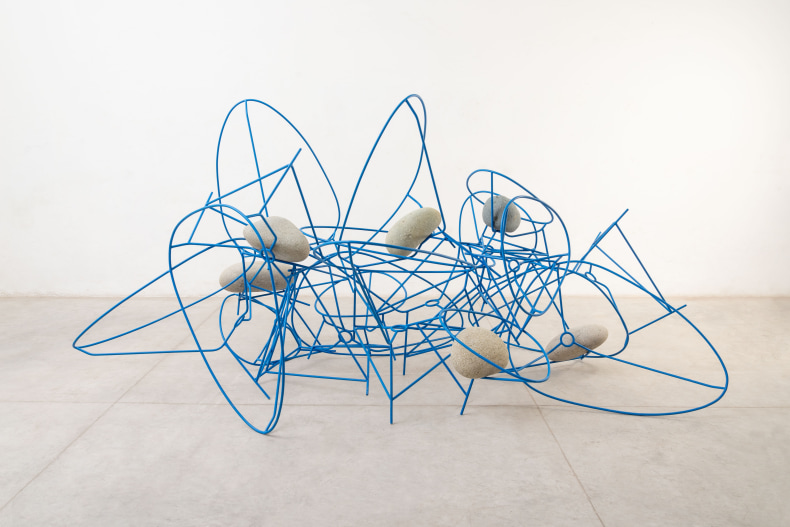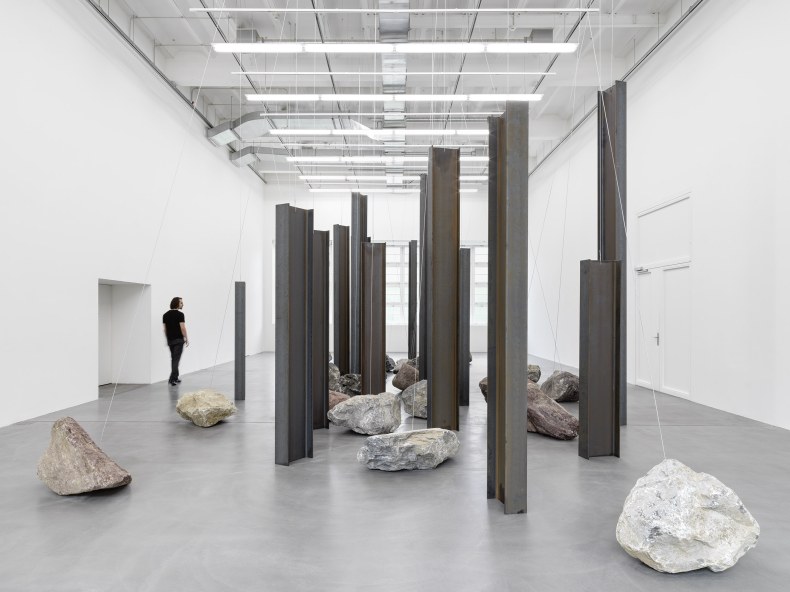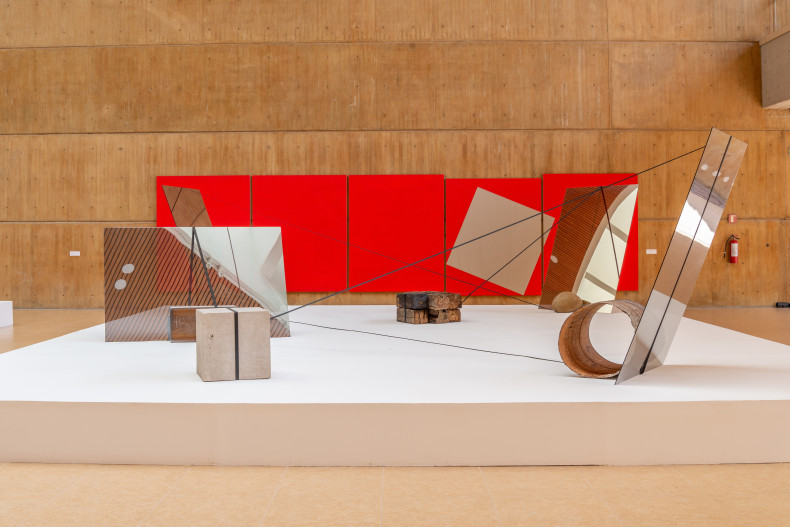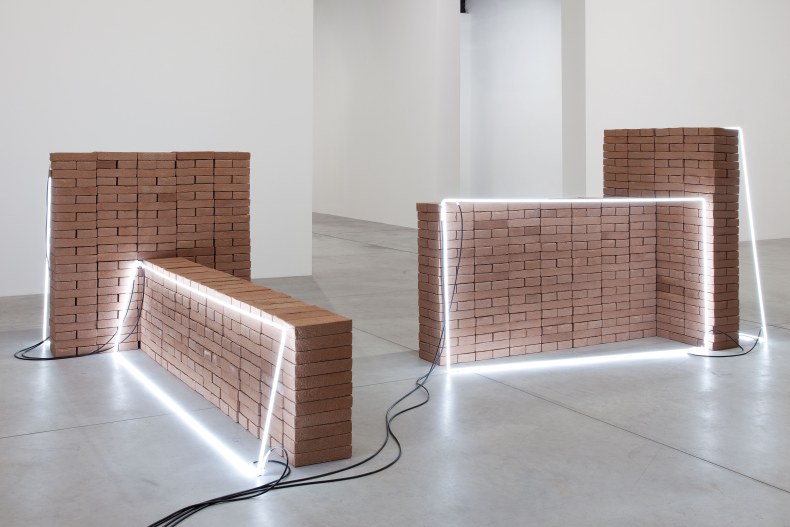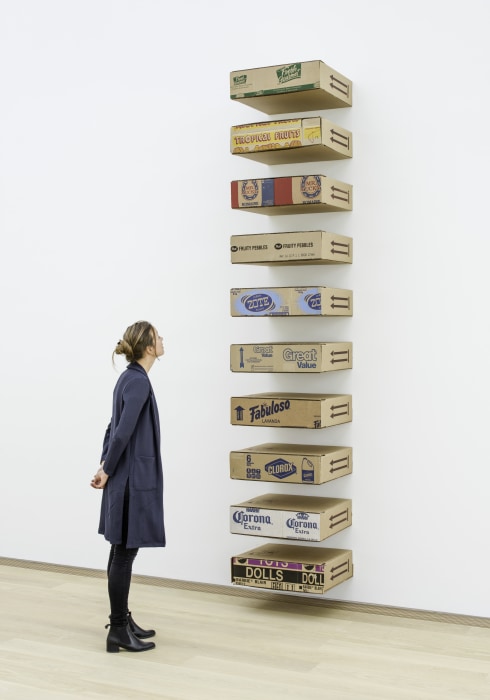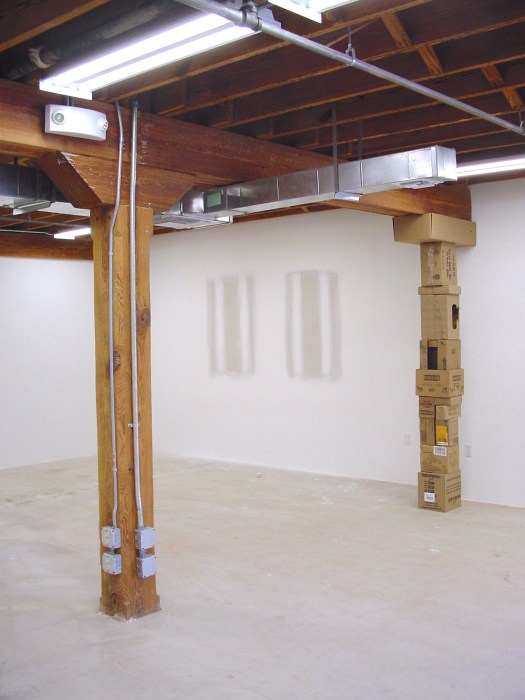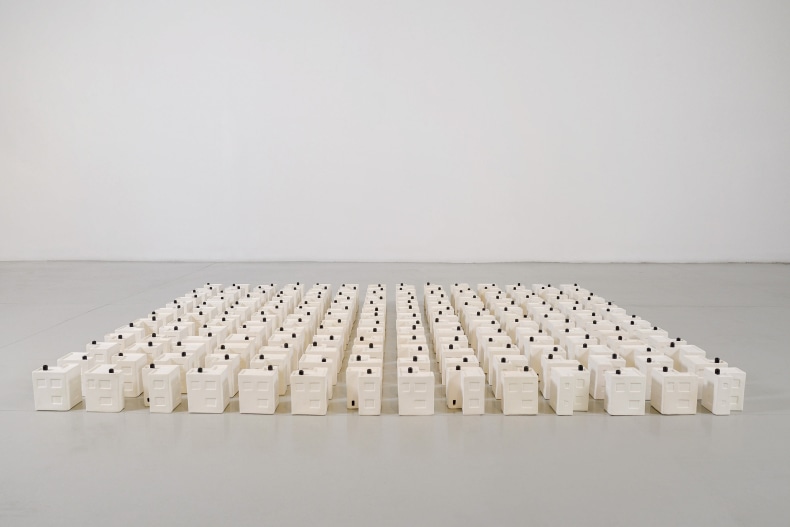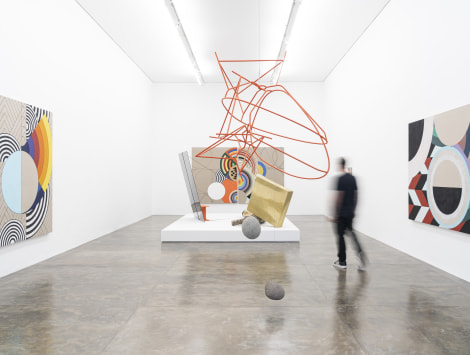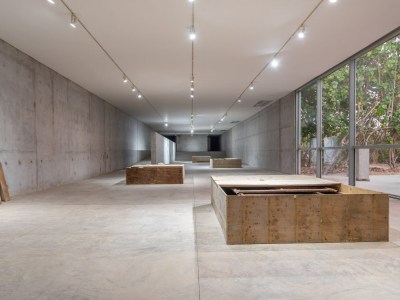For more than two decades, Jose Dávila (b. 1974, Guadalajara, México) has been working in the sculptural field, creating works that bring together materials in precarious compositions. By studying and understanding how gravitational energy works, the artist plays with balance. That is one of his most important compositional methods, as well as seriality and stacking, which he employs to create not only visual but physical tensions. The apparent instability of his pieces claims the public's attention, demanding a deep perception of space and spatiality. Dávila challenges the viewer to face the elements and construction of the work from different perspectives, observing how they are capable of making rawness and fragility coexist, as well as organic and artificial form, system and chaos, danger, and peace.
Jose Dávila’s practice is based on an original approach to the fundamental properties of the sculptural medium, such as weight, density, shape, volume, and mass. These aspects, in interaction with the characteristics of each material, often used in their raw state, such as rocks, or after having gone through industrial processes, such as metal, concrete, and glass structures, lead us to see his works as an expressive manifestation of human constructive will. Frequently, the artist brings together different forms and objects using ropes and wires, or leaning on each other, giving protagonism to physical forces, made explicit by the co-dependent relationship between the work's internal forms, emphasizing the different rhythms created by internal dynamics and tensions in their configuration.
Jose Dávila lives and works in Guadalajara, Mexico. He had several solo exhibitions dedicated to his production, such as: Las piedras saben esperar, at Centro Internazionale di Scultura (2021), in Peccia, Switzerland; Directional Energies, at Dallas Contemporary (2020), in Dallas, USA; Pensar como una montaña, at Museo Amparo (2019), in Puebla, Mexico; Non tutti quelli che vagano sono persi, at Museo del Novecento (2018), in Florence, Italy; Die Feder und der Elefant, at Kunsthalle Hamburg (2017), in Hamburg, Germany; and Jose Dávila: The Object and the Environment, at Jumex Museum (2016), in Mexico City, Mexico. Dávila participated in the 16th Lyon Biennial, France (2022); in the 22nd Sidney Biennial, Australia (2020); and in the 13th and12th Havana Biennial, Cuba (2019 and 2017). His works were included in several group exhibitions, such as: Walking Through Walls, at Gropius Bau (2019), in Berlin, Germany; Cher(es) ami(e)s, at Centre Georges Pompidou (2016), in Paris, France; Panorama. Foreigners everywhere, at Museu de Arte Moderna de São Paulo (MAM-SP) (2009), in São Paulo, Brazil; Eco. Mexican Contemporary Art, at Museo Nacional Centro de Artes Reina Sofia (MNCARS) (2005), in Madrid, Spain. His works can be found in important institutional collections, such as: Solomon R. Guggenheim Museum, New York, USA; Centre Georges Pompidou, Paris, France; Pérez Art Museum, Miami, USA; Museo Nacional Centro de Arte Reina Sofía (MNCARS), Madrid, Spain; Instituto de Arte Contemporânea de Inhotim, Brumadinho, Brazil; and Hamburger Kunsthalle, Hamburg,Germany; among others.
